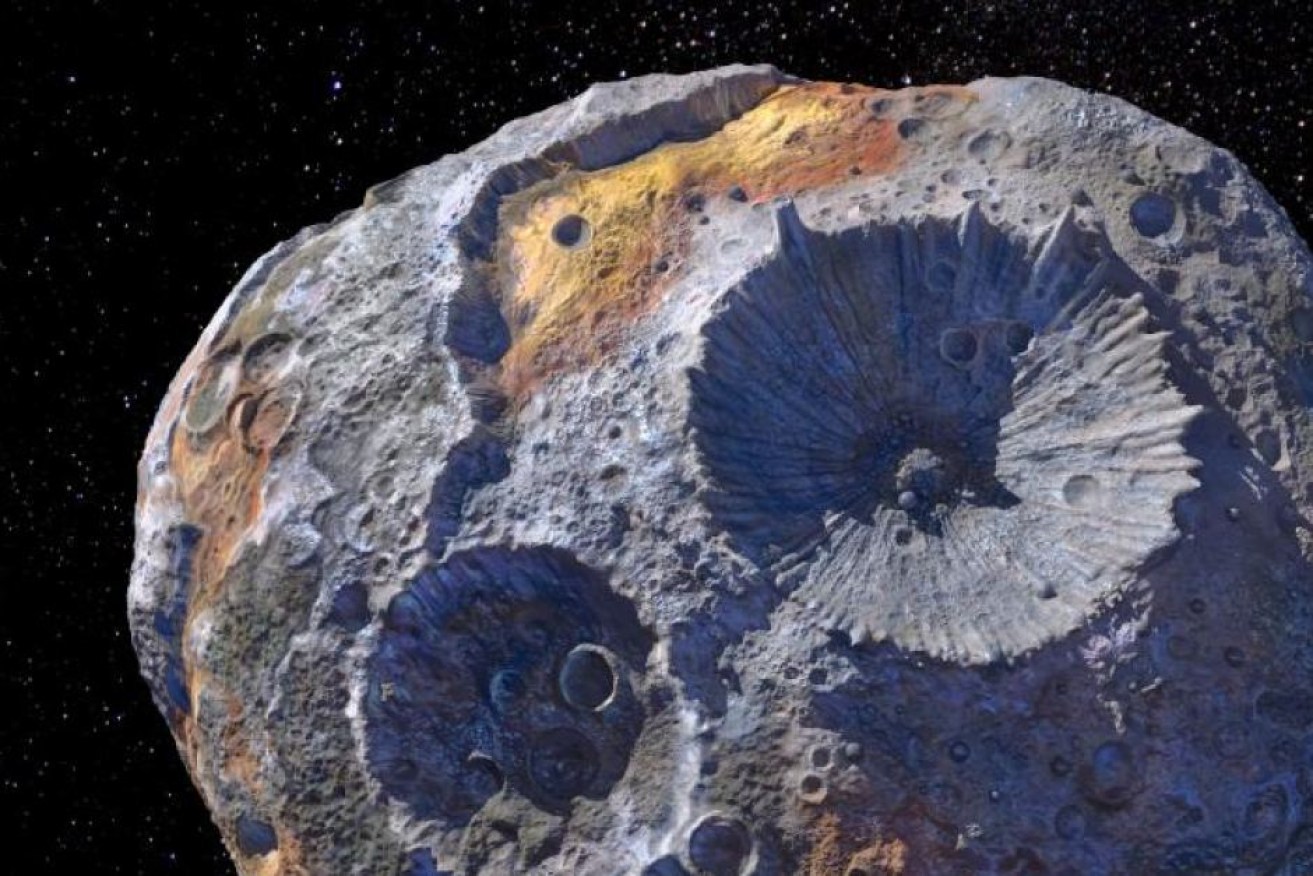Meet the metal marvel of the asteroid belt

This giant asteroid made of metal could offer a glimpse of what lies deep in the heart of our own planet. Photo: Arizona State University
Hiding in the belt of frozen rocks between Mars and Jupiter is a body like nothing else in the solar system. The odds of it even existing are tiny.
Its name is 16 Psyche. At 210 kilometres wide, it is easily one of the bigger asteroids, but Psyche’s stand-out feature is that it is made almost entirely of metal.
That is so unusual that NASA is funding a seven-year mission to visit the asteroid with a robotic spacecraft and study it in detail.
Nearly every other known body orbiting the Sun is rocky, icy or made of gas. The only place you find big chunks of metal like this is at the core of a planet, like Earth.
And that is exactly how Lindy Elkins-Tanton, the principal investigator on NASA’s Psyche mission, thinks the metallic asteroid started out – as a protoplanet in the Sun’s early days.
“Early in our solar system it was a very violent, fast time when there were many, many objects orbiting the Sun and colliding with each other,” she told The Science Show on ABC RN.
“Most of these collisions were accretionary – they built up into the planets like the one we stand on today. But some of them were destructive and they struck the rock off each other.”
If 16 Psyche did start out as a protoplanet, as Professor Elkins-Tanton expects, it would have had a run of very bad luck.
Planetary formation models show it takes up to eight destructive collisions in a row to strip the rock off a metal core.
“So if Psyche is a core it’s an improbable object, and it’s also a unique object,” Professor Elkins-Tanton said.
And it might be the only chance we will have to study a planetary core.
At 4000 kilometres deep and with a temperature of 5000 degrees Celsius, Earth’s core is far out of reach.

A world made of metal, 16 Psyche is unlikely to look like anything we’ve ever seen. Photo: NASA
What 16 Psyche could tell us about Earth
The $US450-million mission, announced by NASA in January and scheduled for a 2023 launch, will send a solar-electric propelled craft to study 16 Psyche in progressively smaller orbits. But it will not touch down.
“Sadly, even for this amount of money you cannot land reliably,” Professor Elkins-Tanton said.
The craft will be loaded up with instruments to analyse the asteroid inside and out, giving us a glimpse into the likely contents and formation process of our own planetary core, as well as conditions in the very early solar system.
Magnetometers will determine whether 16 Psyche has the magnetic field you would expect of a planetary core, Professor Elkins-Tanton explained, and cameras will capture what is expected to be a unique surface topography.
“Humans have never seen a metal world before.”
Although the asteroid’s metallic nature was established 30 years ago when researchers fired radar beams at 16 Psyche from the Arecibo telescope in Puerto Rico, its exact chemical composition is not known.
Based partly on those radar observations, Professor Elkins-Tanton expects a mixture of iron and nickel. These are the most common metals in planetary cores and in iron asteroids that fall to Earth.
Spectrometers on the spacecraft will confirm exactly what elements make up the asteroid by analysing the gamma rays and neutrons it emits.
While it appears to be mostly metal, recent studies have found that silicate rock – like the rocks we know from our planet – makes up around 10 per cent of 16 Psyche’s surface.
This mission should deliver a glimpse into the early days of our solar system, insights into the process of planet formation, and pictures of a world unlike any other.
And with 13 years to wait before Professor Elkins-Tanton’s little craft reaches its bizarre target – it will be worth the wait!
-ABC








